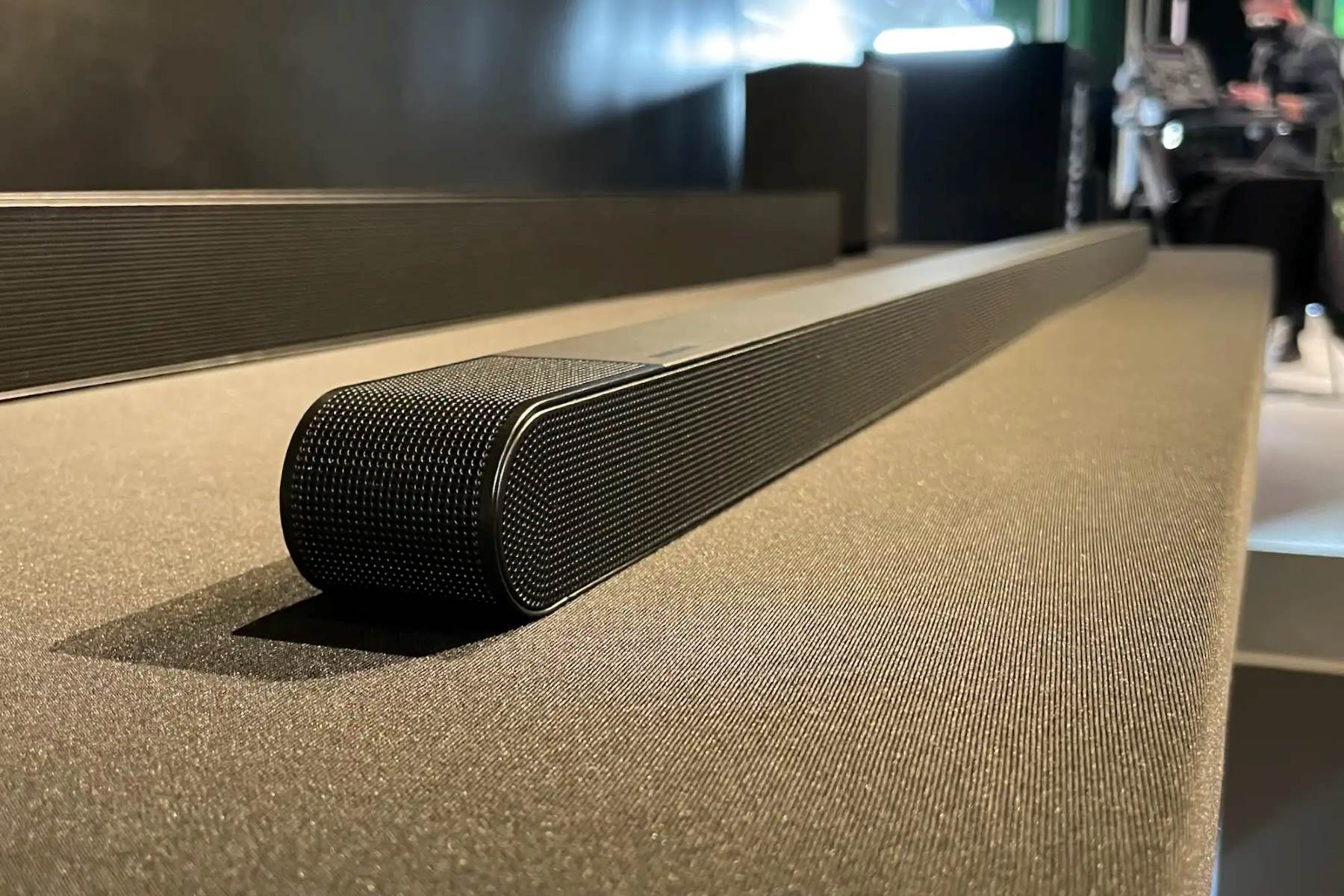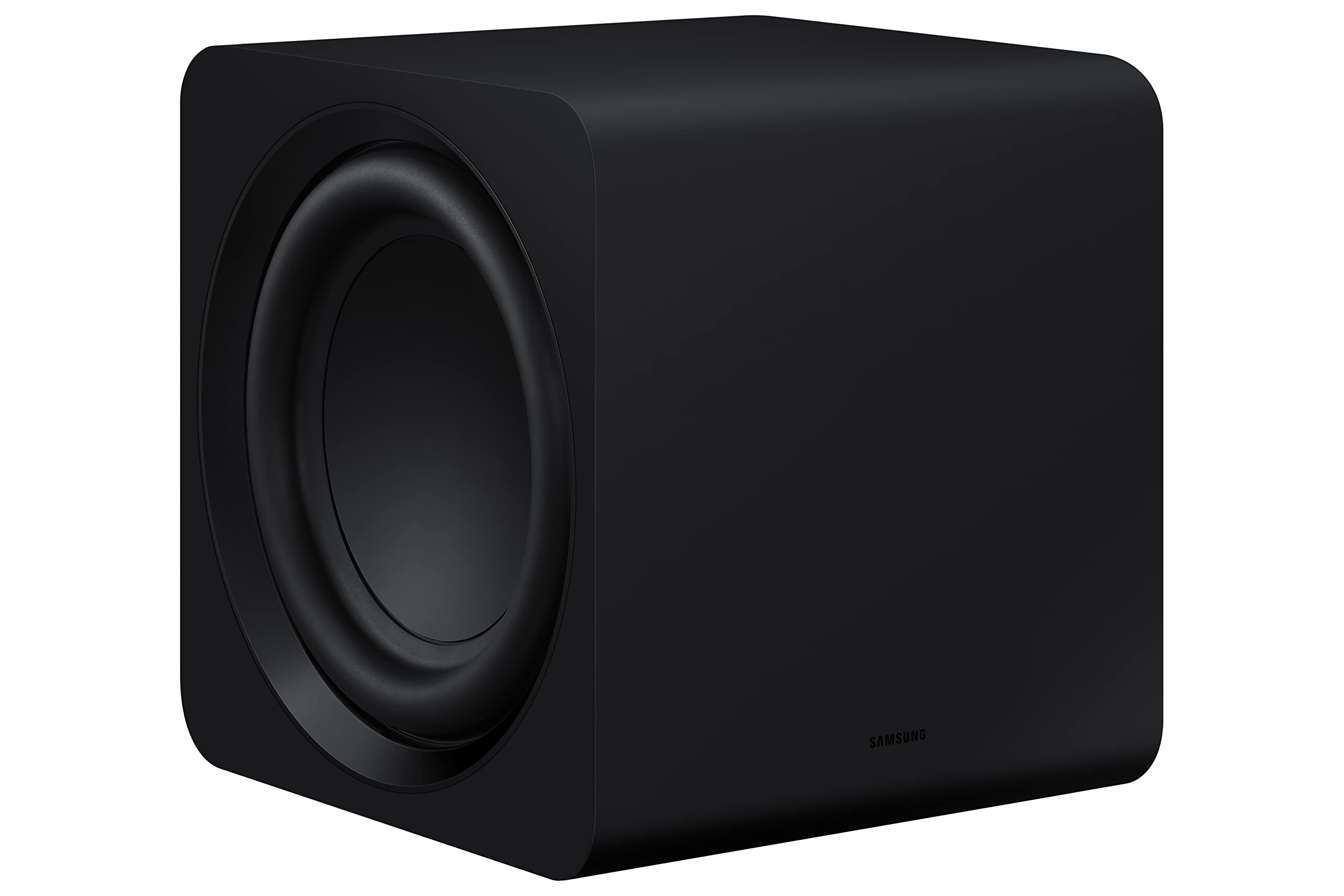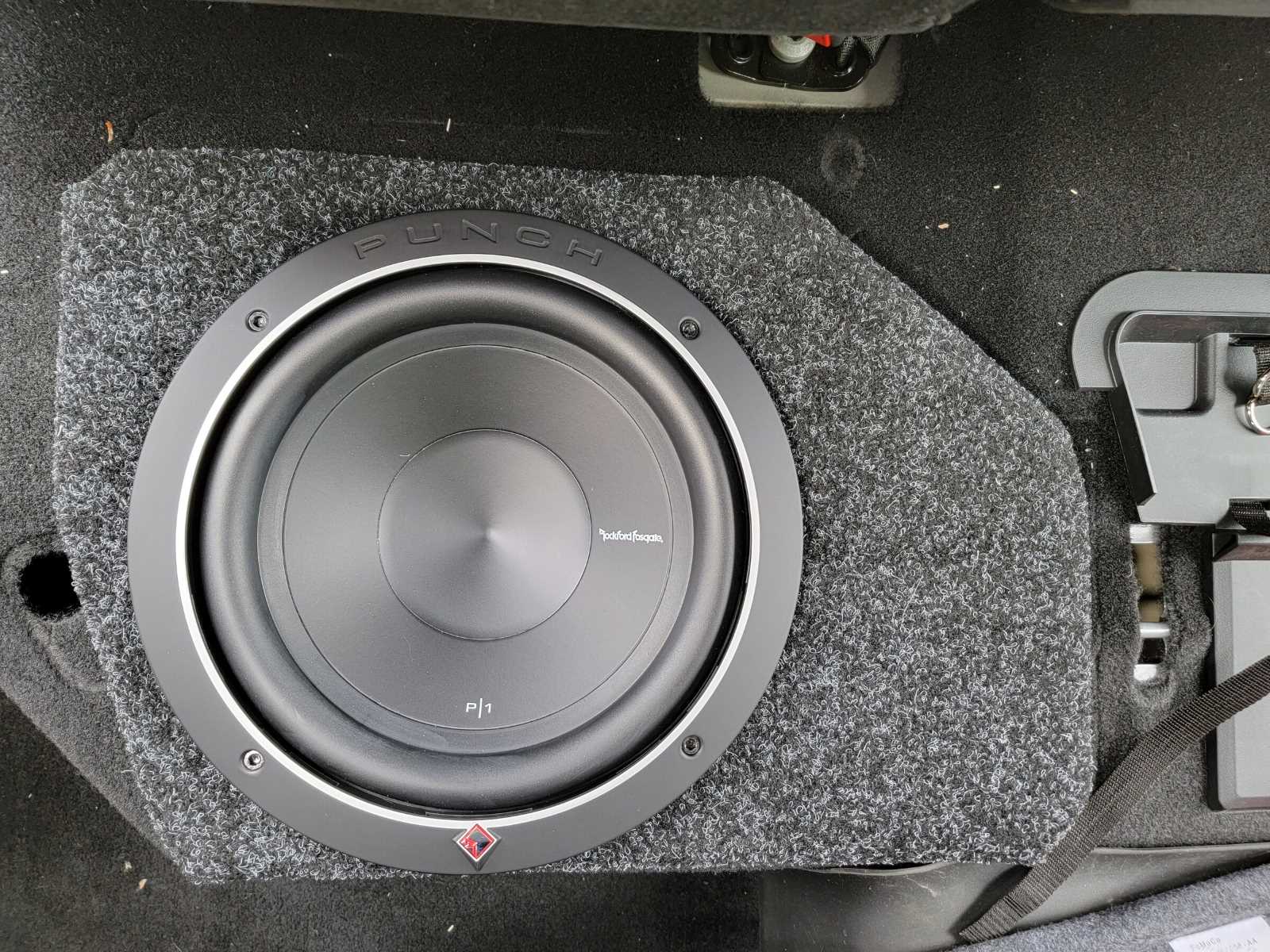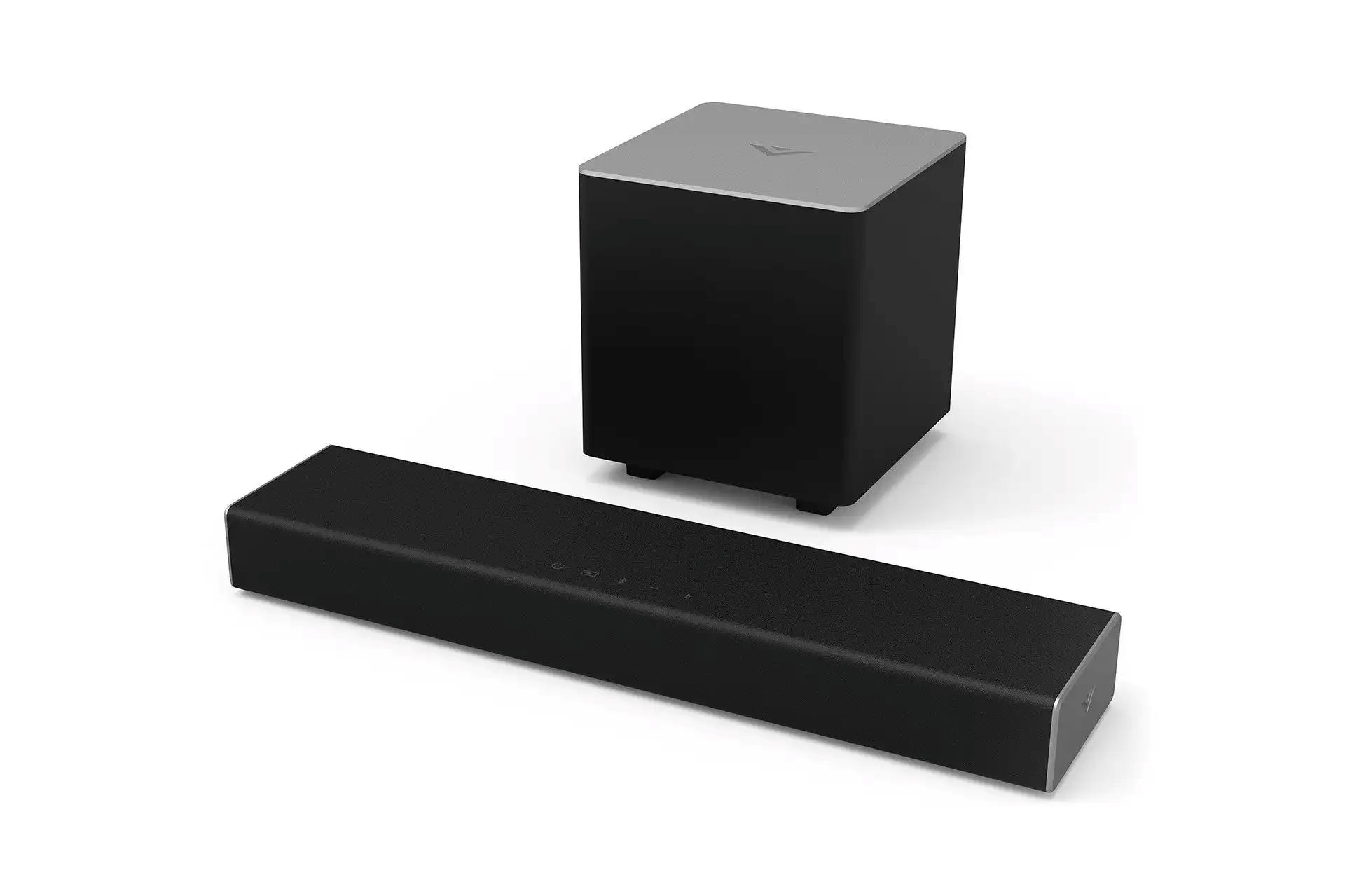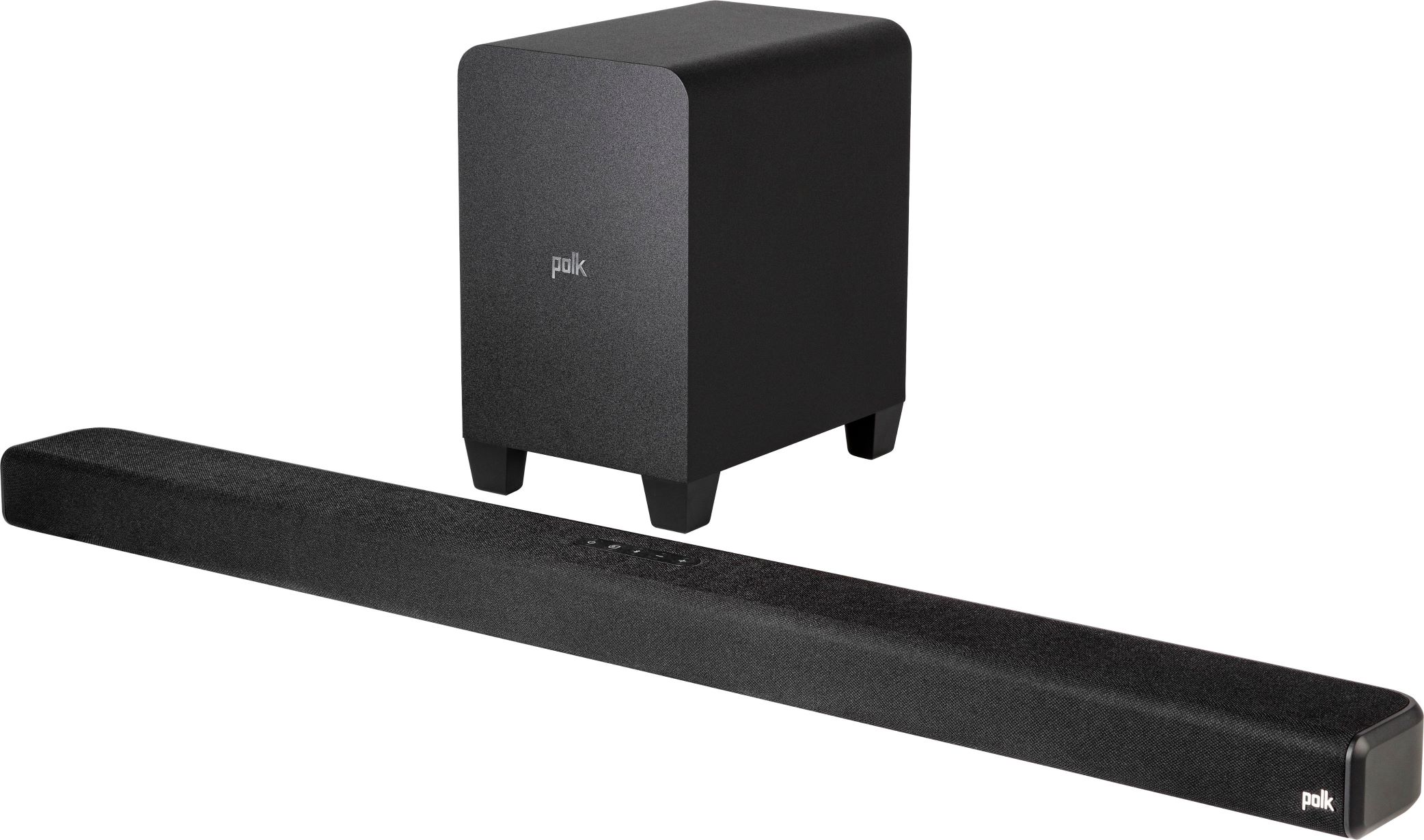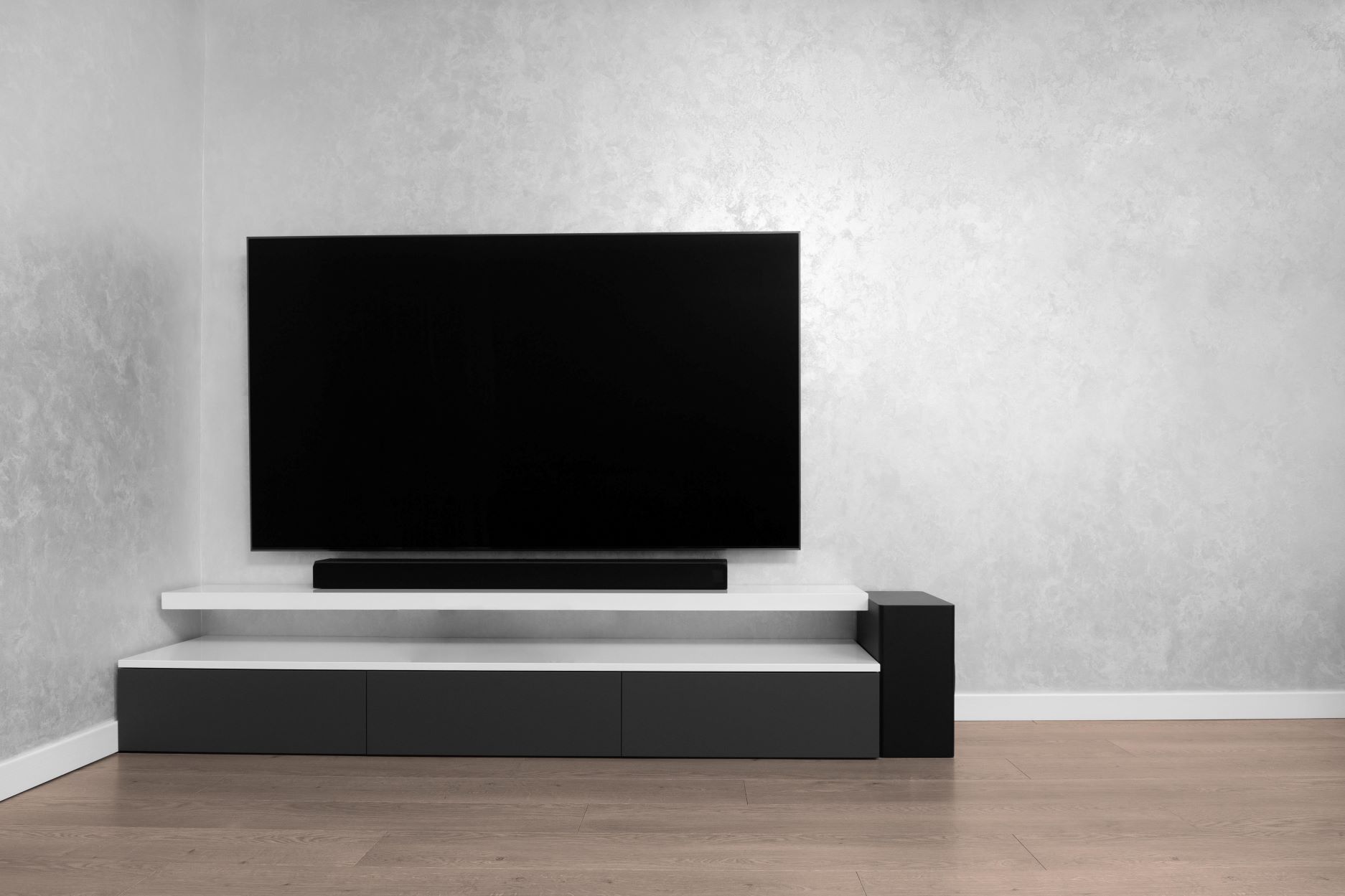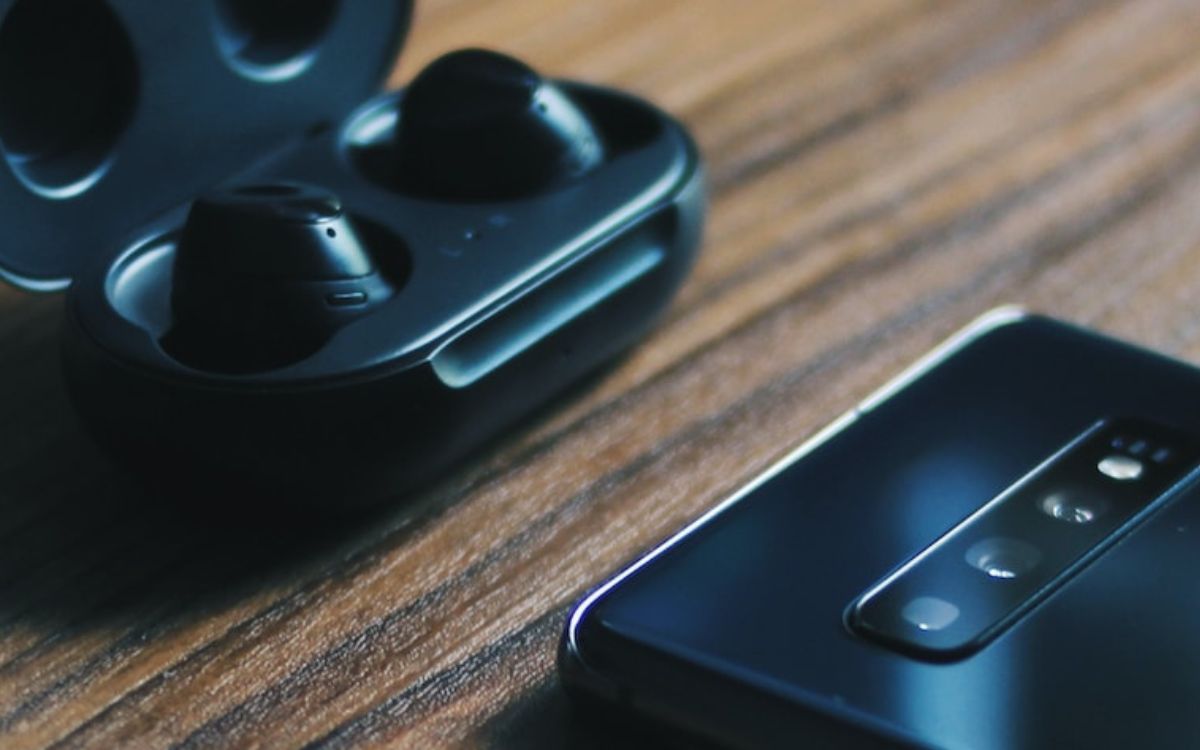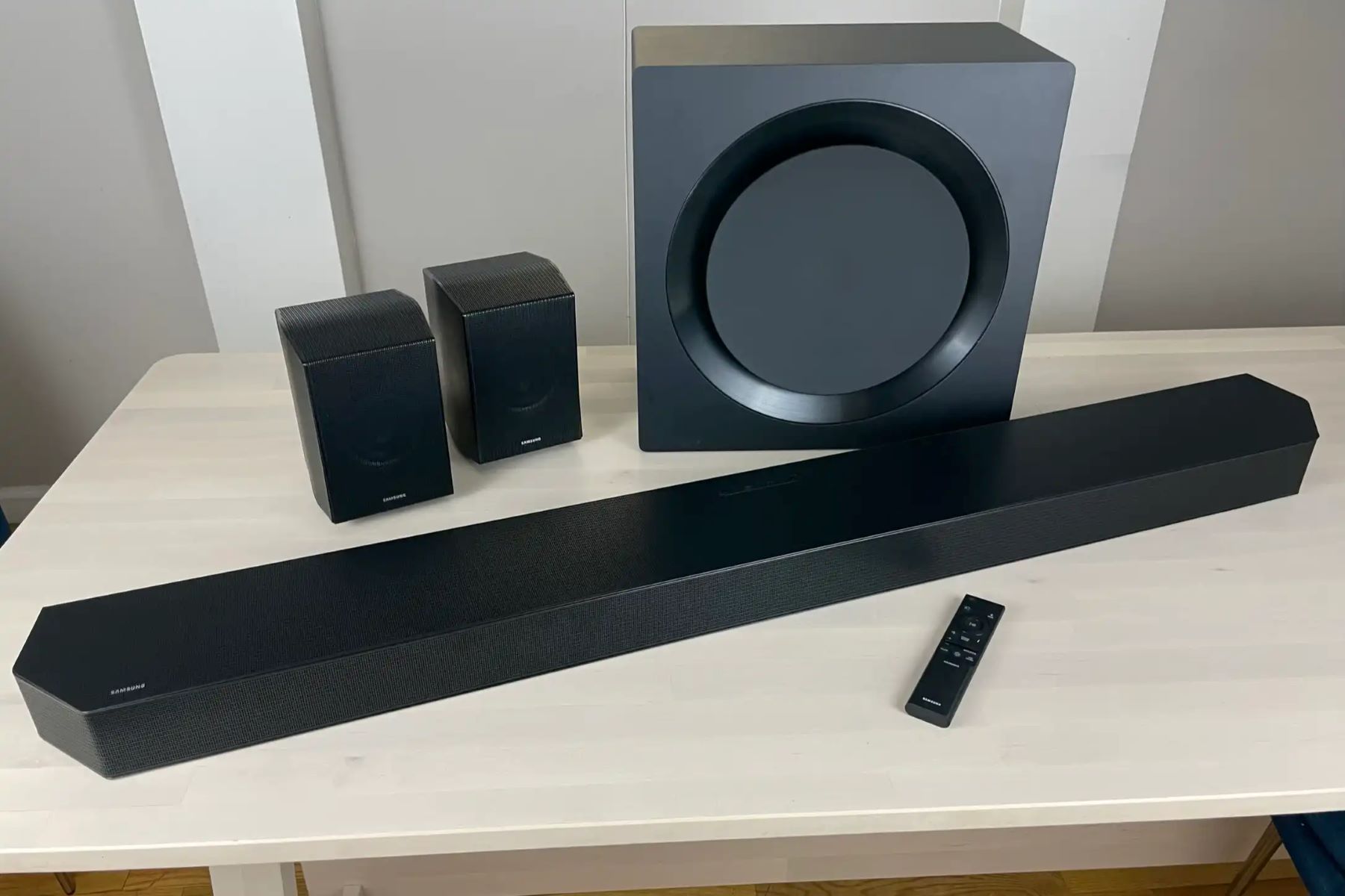Home>Devices & Equipment>Subwoofer>Why Wont My Subwoofer Connect To My Soundbar?
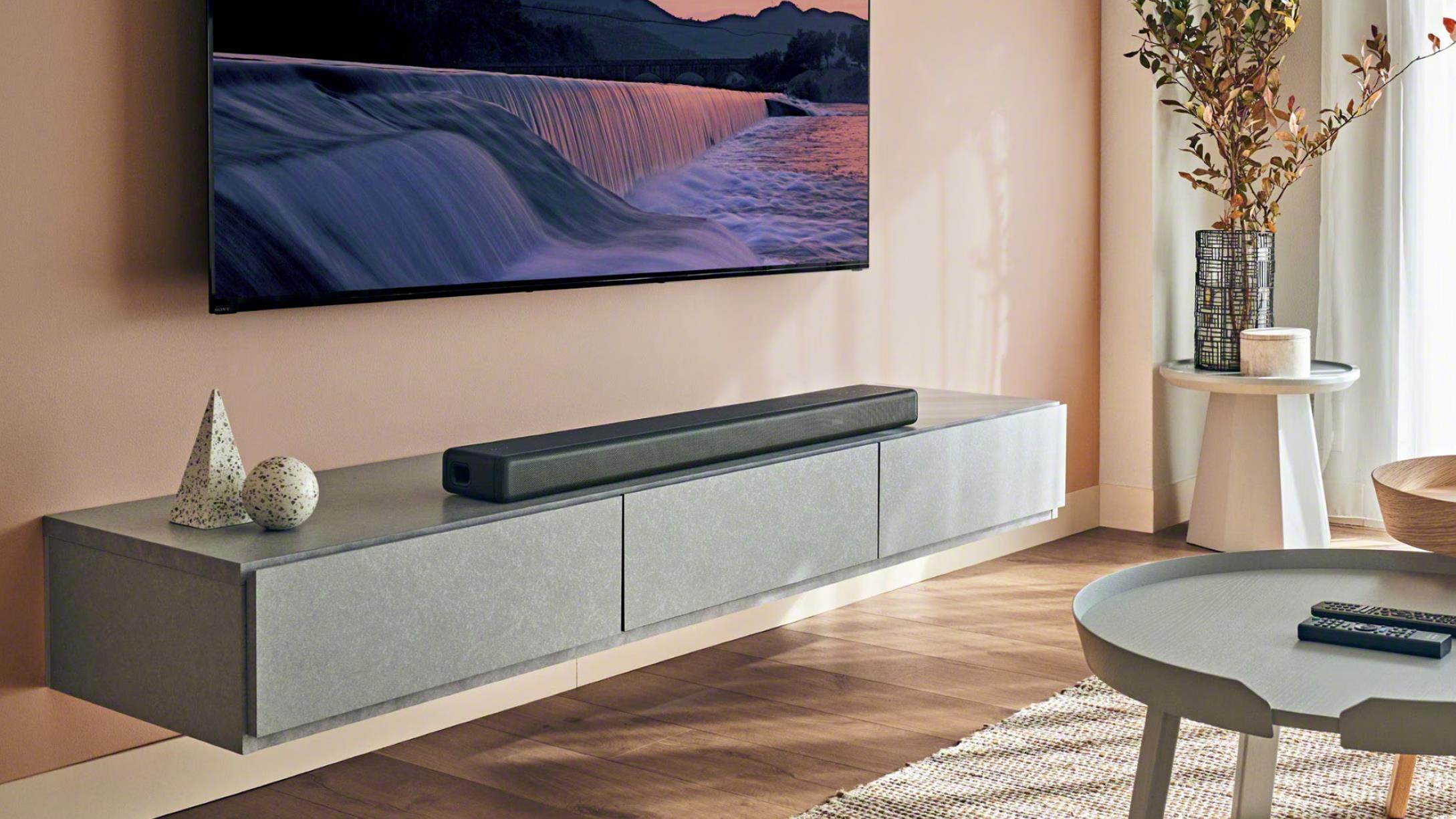

Subwoofer
Why Wont My Subwoofer Connect To My Soundbar?
Modified: January 22, 2024
Having trouble connecting your subwoofer to your soundbar? Discover the possible reasons and find solutions to get your subwoofer working seamlessly with your sound system.
(Many of the links in this article redirect to a specific reviewed product. Your purchase of these products through affiliate links helps to generate commission for AudioLover.com, at no extra cost. Learn more)
Table of Contents
Introduction
Welcome to the world of subwoofers and soundbars, where you can immerse yourself in a rich and powerful audio experience. However, what happens when your subwoofer fails to connect to your soundbar? It can be a frustrating experience, but fear not, as we are here to help you troubleshoot and resolve this issue.
A subwoofer is a key component of any audio setup, responsible for producing low-frequency sounds that add depth and impact to your music, movies, and games. A soundbar, on the other hand, is a sleek and compact speaker system that enhances the sound quality of your TV or audio source. When these two devices come together, they can deliver an impressive audio performance.
Unfortunately, connecting a subwoofer to a soundbar may not always be a seamless process. There are several factors that can contribute to this problem, including compatibility issues, cable connection problems, settings and configuration errors, Bluetooth pairing troubles, audio input selection, power and signal issues, and subwoofer placement.
In this article, we will explore these common issues in detail and provide you with practical solutions to get your subwoofer connected to your soundbar. Whether you’re a beginner or an audio enthusiast, you’ll find valuable insights and troubleshooting tips to address this connectivity challenge.
So let’s dive in and unravel the mysteries of subwoofer and soundbar connections!
Common Connection Issues
When it comes to connecting a subwoofer to a soundbar, there are a few common issues that can arise. Understanding these issues will help you troubleshoot and resolve the problem effectively. Let’s take a closer look at some of the most frequent connectivity challenges:
- No sound: One of the most frustrating issues is when you have no sound coming from your subwoofer. This could be due to a variety of reasons, such as incorrect settings, faulty cables, or a power-related problem. We will delve deeper into these possible causes and their solutions in the subsequent sections.
- Intermittent sound: Another common issue is when the sound from your subwoofer cuts in and out or randomly stops working. This can be caused by loose cable connections, wireless interference, or software glitches. By identifying the root cause, you can ensure a consistent and uninterrupted audio experience.
- Low volume or poor sound quality: If you notice that your subwoofer is producing low volume or the sound quality is not up to par, there could be several factors at play. This may involve incorrect audio settings, inadequate power supply, or placement issues. Identifying and addressing these factors will help optimize the performance of your subwoofer.
While these are the most common connection issues, it’s important to note that each situation can be unique. By understanding the underlying causes and implementing the appropriate solutions, you can ensure a seamless and enjoyable audio experience with your subwoofer and soundbar combination.
Compatibility Issues
Compatibility plays a crucial role in connecting a subwoofer to a soundbar. If the two devices are not compatible, it can hinder the connection process and lead to issues such as no sound, distorted audio, or improper synchronization. Here are some compatibility factors to consider:
- Matching brands/models: Ensure that your subwoofer and soundbar are designed to work together. Sometimes, brands offer subwoofers specifically designed for their soundbars, ensuring optimal compatibility and seamless integration.
- Matching wireless technology: If you are using a wireless subwoofer, make sure that it supports the same wireless technology as your soundbar. Common wireless technologies include Bluetooth and Wi-Fi. Ensure that both devices are compatible with the same standard for a successful connection.
- Matching connectivity ports: Check the connectivity options of your subwoofer and soundbar. Ensure that they have matching ports, such as HDMI ARC (Audio Return Channel), optical, or RCA inputs. This will allow you to establish a physical connection between the two devices.
- Driver and amplifier compatibility: The driver and amplifier inside the subwoofer should be compatible with the output power of the soundbar. Mismatched power levels can result in distorted or weak bass performance.
If you are unsure about the compatibility between your subwoofer and soundbar, refer to the user manuals or consult the manufacturer’s website. They can provide valuable information on compatibility and recommended configurations.
In some cases, you may need additional accessories, such as adapters or converters, to establish a compatible connection between your subwoofer and soundbar. Be sure to research and purchase the necessary equipment to ensure a smooth and compatible connection.
By ensuring compatibility between your subwoofer and soundbar, you can significantly decrease the chances of connection issues and enjoy a seamless audio experience.
Cable Connection Problems
Cables are the lifelines of any audio setup, including the connection between a subwoofer and a soundbar. When there are issues with the cable connections, it can result in a lack of sound, poor audio quality, or intermittent connection. Here are some common cable connection problems and their solutions:
- Loose or disconnected cables: Ensure that all cables, including those connecting the subwoofer and soundbar, are securely plugged in. Sometimes, cables can come loose due to movement or accidental disconnection. Firmly insert the cables into their respective ports to establish a reliable connection.
- Damaged or faulty cables: Inspect the cables for any visible signs of damage or wear. Frayed or broken cables can negatively impact the audio signal, resulting in poor sound quality or connectivity issues. If you notice any damage, replace the cable with a new one that matches the required specifications.
- Incorrect cable connections: Verify that you have connected the appropriate cables to the corresponding ports on both the subwoofer and soundbar. Using the wrong cables or connecting them incorrectly can lead to improper audio signal transmission and connection problems.
- Signal interference: Keep in mind that cables can be susceptible to signal interference from other electronic devices. Try repositioning the cables away from sources of interference, such as power outlets, Wi-Fi routers, or other audio/video equipment, to minimize signal disruptions.
Additionally, consider using high-quality cables designed for audio applications. Poor-quality or generic cables may not provide optimal signal transmission, resulting in reduced audio performance. Investing in good quality cables can help maintain a stable and reliable connection between your subwoofer and soundbar.
If you’re using wireless connectivity options, such as Bluetooth or Wi-Fi, ensure a stable and strong wireless connection between the subwoofer and soundbar. Keep the devices within the recommended range and avoid any physical obstructions that may hinder the wireless signal.
By addressing cable connection problems and ensuring a secure and reliable connection, you can overcome many of the common connectivity issues between your subwoofer and soundbar.
Settings and Configuration Errors
Settings and configuration errors can often be the culprit behind connection issues between a subwoofer and a soundbar. Incorrect settings or misconfigured options can result in no sound, unbalanced audio, or limited functionality. Let’s explore some common settings and configuration errors:
- Audio output settings: Verify that the audio output settings on your soundbar and audio source are properly configured. For example, if you’re using an HDMI connection, ensure that the audio output is set to HDMI or HDMI ARC. If you’re using an optical cable, select the optical input on the soundbar. Incorrect audio output settings can prevent the subwoofer from receiving the audio signal.
- Audio mode and equalizer settings: Check the audio mode and equalizer settings on your soundbar. Some soundbars have different sound modes, such as movie, music, or gaming, which optimize the audio output for specific content types. Ensure that the appropriate mode is selected for the best audio experience. Additionally, adjust the equalizer settings to fine-tune the bass response and overall sound quality.
- Volume settings: If you’re experiencing low volume from the subwoofer, check the volume settings for both the soundbar and the subwoofer itself. Make sure that the volume levels are appropriately adjusted to ensure a balanced audio output. Also, avoid any mute settings that could be enabled, silencing the subwoofer.
- Firmware updates: Check if there are any firmware updates available for your soundbar or subwoofer. Outdated firmware can cause compatibility issues and connectivity problems. Visit the manufacturer’s website or refer to the user manual for instructions on how to update the firmware to the latest version.
It’s important to note that the specific settings and configuration options may vary based on the make and model of your soundbar and subwoofer. Always consult the user manual or manufacturer’s website for detailed instructions on the recommended settings and configuration options for optimal performance.
By double-checking the settings and configuration of your subwoofer and soundbar, you can rectify any errors and ensure a proper connection between the two devices, resulting in an immersive audio experience.
Bluetooth Pairing Troubles
Bluetooth pairing issues can be a common headache when trying to connect a subwoofer to a soundbar wirelessly. Bluetooth connectivity problems can cause the subwoofer to disconnect frequently or fail to pair at all. Here are some steps to troubleshoot Bluetooth pairing troubles:
- Ensure compatibility: Verify that both your subwoofer and soundbar support Bluetooth connectivity. Some older models may not have built-in Bluetooth, while others may only support specific Bluetooth versions. Check the user manuals or manufacturer’s website for compatibility information.
- Enable Bluetooth: Make sure that Bluetooth is enabled on both devices. On your soundbar, access the settings menu and navigate to the Bluetooth or Wireless section to ensure that Bluetooth is switched on. Similarly, activate Bluetooth on your subwoofer, following the instructions provided in the user manual.
- Pairing mode: Activate the pairing mode on both the soundbar and the subwoofer. This mode allows the devices to search for and establish a connection with each other. Refer to the user manuals for specific instructions on how to activate pairing mode, as the process may vary depending on the make and model.
- Distance and obstructions: Maintain a close distance between the subwoofer and soundbar during the pairing process. Bluetooth signals can weaken with distance and can be obstructed by walls or other physical barriers. Keeping the devices within a recommended range will ensure a stronger, more stable connection.
- Remove existing pairings: If you have previously paired the subwoofer or soundbar with other devices, it’s possible that those connections are interfering with the new pairing. Remove any existing Bluetooth pairings by accessing the Bluetooth settings on both devices and selecting the option to forget or delete the previous connections.
- Update firmware: Like other electronic devices, both the subwoofer and soundbar may have firmware updates available. Check the manufacturer’s website or user manual for instructions on how to update the firmware. Updating the firmware can address any known Bluetooth connectivity issues.
If you continue to experience Bluetooth pairing troubles, try restarting both the subwoofer and soundbar, and repeat the pairing process from the beginning. If the problem persists, it may be worth contacting the manufacturer’s customer support for further assistance.
By following these troubleshooting steps, you can overcome Bluetooth pairing troubles and establish a reliable wireless connection between your subwoofer and soundbar.
Audio Input Selection
Incorrect audio input selection can cause issues when connecting a subwoofer to a soundbar. If you’ve successfully connected the physical cables or established a wireless connection, but still no sound is coming from the subwoofer, it may be due to an incorrect audio input selection. Here’s what you can do to ensure the proper audio input selection:
- Check the soundbar’s input selection: Most soundbars have multiple input options, such as HDMI ARC, optical, or auxiliary. Ensure that the soundbar is set to the correct input mode that matches the cable connection you are using. Use the remote control or the control panel on the soundbar to switch between the available input sources.
- Verify the audio output setting on your source device: If you’re connecting the soundbar to a TV, gaming console, or any other audio source, make sure that the audio output setting on that device is correctly configured. Check the device’s audio settings menu to ensure that it is set to output audio to the connected soundbar.
- Confirm the audio output format: Some audio sources may have specific audio output formats, such as Dolby Digital or DTS. Verify that the soundbar supports the selected audio output format. If the soundbar doesn’t support the chosen format, either switch the audio output format on your source device to a supported format or consider upgrading the soundbar to one that can handle the desired audio format.
- Test different audio input options: If you’ve checked the input selection and confirmed the audio output settings on your source device, try testing different audio input options on the soundbar. Sometimes, the issue may be with a specific input source, and switching to an alternative input may resolve the problem.
By ensuring the correct audio input selection on both the soundbar and the source device, you can overcome connection issues and enjoy the immersive sound experience your subwoofer and soundbar combination has to offer.
Power and Signal Issues
Power and signal issues can significantly impact the connectivity and performance of your subwoofer and soundbar setup. If you’re experiencing no sound, intermittent audio, or other connection-related problems, it’s essential to address power and signal issues. Here’s what you can do:
- Check power connections: Ensure that all power cables are securely connected to their respective devices, including the subwoofer and soundbar. Also, make sure that the power outlets are functioning correctly. Sometimes, a loose or faulty power connection can lead to loss of power and audio signal.
- Power cycle the devices: Power cycling involves turning off the subwoofer, soundbar, and any connected devices, and then turning them back on after a short wait. This process helps reset the electronic components and can resolve temporary power or signal issues. Once the devices are powered back on, check if the connection problem is resolved.
- Signal interference: In some cases, other electronic devices or wireless networks in close proximity can cause signal interference, resulting in connection problems. Try relocating the subwoofer and soundbar away from potential sources of interference, such as Wi-Fi routers, cordless phones, or microwave ovens.
- Signal strength: If you’re using a wireless subwoofer, ensure that it is within the recommended range of the soundbar. Weak signals can lead to connection dropouts or audio distortion. Consider relocating the subwoofer or soundbar closer to each other to improve the signal strength.
- Simplify the setup: If you have a complex audio setup with multiple devices connected to the soundbar, it can cause power and signal issues. Try disconnecting unnecessary devices and simplify the setup to focus on troubleshooting the connection between the subwoofer and soundbar. This can help identify and resolve any conflicts or compatibility issues.
- Consider using surge protectors: Power surges or fluctuations can damage electronic components and disrupt the audio signal. Using surge protectors or power conditioners can help protect your subwoofer and soundbar from sudden power spikes and provide a stable power supply.
By addressing power and signal issues, you can ensure a stable and reliable connection between your subwoofer and soundbar, allowing you to enjoy the full potential of your audio system.
Subwoofer Placement
The placement of your subwoofer can have a significant impact on its performance and the overall audio experience. Improper subwoofer placement can lead to uneven bass response, muffled sound, or distortion. To optimize the performance of your subwoofer and enhance the connectivity with your soundbar, consider the following placement tips:
- Avoid placing the subwoofer in a corner: Placing the subwoofer in a corner of the room can result in excessive bass buildup and make the bass sound boomy or overpowering. Try to position the subwoofer away from walls and corners to achieve a more balanced and accurate bass response.
- Experiment with subwoofer positioning: Subwoofers can be placed in various locations within the room to achieve different sound characteristics. Start by placing the subwoofer along the front wall, either to the side or center of the room, and listen for the bass response. You may need to experiment with different positions to find the spot that provides the best balance between bass impact and clarity.
- Consider symmetry: If you have multiple subwoofers or a dual subwoofer setup, placing them symmetrically within the room can help achieve a more even bass distribution. This can result in a smoother and more immersive audio experience.
- Isolate the subwoofer: To prevent vibrations and unwanted resonance, consider using isolation pads or a dedicated subwoofer stand. These accessories help decouple the subwoofer from the floor or surface it is placed on, minimizing vibrations and improving overall sound quality.
- Keep the subwoofer away from other electronics: Electronics and appliances can generate electromagnetic interference, which can affect the subwoofer’s performance and wireless connectivity. Try to keep the subwoofer away from other devices, such as TVs, receivers, or routers, to minimize potential interference.
Experimenting with subwoofer placement can be a subjective process, as the acoustics of each room can vary. It’s recommended to listen to different placements and make adjustments based on your personal preferences and the characteristics of your listening area.
By optimizing the placement of your subwoofer, you can ensure optimal bass performance, improve the connectivity with your soundbar, and enhance the overall audio quality of your entertainment setup.
Conclusion
Connecting a subwoofer to a soundbar can sometimes be a challenging task, but with the right troubleshooting steps and considerations, you can overcome common connection issues and enjoy a seamless audio experience. From compatibility and cable connection problems to settings and configuration errors, Bluetooth pairing troubles, audio input selection, power and signal issues, and subwoofer placement, we have explored various factors that can affect the connectivity and performance of your subwoofer and soundbar.
By understanding these issues and implementing the suggested solutions, you can ensure a successful connection and optimize the audio quality of your setup. Remember to check compatibility, ensure proper cable connections, configure the correct settings, address Bluetooth pairing troubles, select the appropriate audio inputs, and pay attention to power and signal issues. Additionally, taking into account the placement of your subwoofer can greatly enhance its performance and integration with the soundbar.
When troubleshooting connection problems, it’s important to refer to the user manuals and manufacturer’s recommendations specific to your subwoofer and soundbar models. Each setup may have its own unique requirements and troubleshooting steps. Don’t hesitate to reach out to the manufacturer’s customer support for further assistance if needed.
With patience and perseverance, you can overcome connectivity challenges and enjoy the immersive sound experience that a subwoofer and soundbar combination can offer. So, go ahead and troubleshoot those connection issues, and get ready to immerse yourself in the deep and powerful bass that will enhance your audio entertainment to a whole new level.

